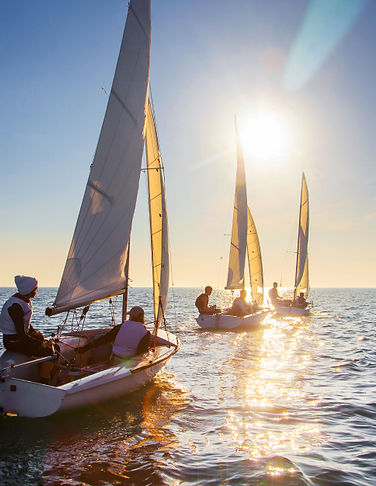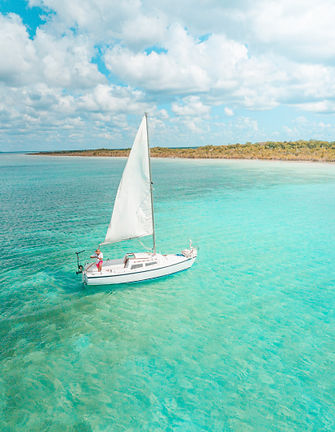.jpg)

What is covered during the 8 hour lesson provided to anyone who buys a new or used sailboat from Ricks’s Small Sailboats LLC?
The lesson will be taught on the boat purchased from Rick’s Small Sailboats LLC (RSS). I think this is very important, because there are small but significant differences between sailboats. This also boosts the confidence of the new sailboat owner, so they feel more confidant the first time they take their boat out without me there to help them.
During conversations with the new owner before and after purchase I ask questions that give me a pretty accurate idea of their level of sailing ability, so I can use the limited time (8 hours) most efficiently. I tailor the content of the lesson to the needs of the student. I have a range of buyers from beginners with little or no sailing knowledge & experience to experienced sailors who have sailed on, or owned several other sailboats previously. I find the experienced sailors often think they know everything. After a short period of time I usually find some gaps in their sailing knowledge that they were not aware they had, and I fill those gaps in.

I usually meet the student at a boat ramp or a beach. Some boats are designed to be launched at a boat ramp and some are designed to be launched at the beach. Boat ramps and beaches can be crowded on weekends so I try to conduct the lesson on a week day if possible. I begin with some aspects of trailer maintenance, how to use a grease gun to add grease to wheel hubs, what to do if your trailer lights stop working, the importance of protecting trailer tires from UV light (cover each wheel with a heavy duty garbage bag when not in use) how to fix rusty spots etc. Then I show them how to get the boat fully rigged and ready to sail on the trailer before launching. Practice backing up your trailer in a empty parking lot so when you are launching at a boat ramp the first time you get your boat in the water and quickly and get out of the way so the next person launching their boat can use the ramp. Always use the the tow vehicle’s emergency break when you get to the bottom of the ramp and are trying to push & float the boat off the trailer.
Then we put on life jackets & leave the boat ramp or beach under sail or in some cases using a outboard motor. If the boat is equipped with a outboard motor I go over maintenance of the motor, flushing the cooling system if the boat is used in salt water etc.
Once we start sailing I cover adjusting sails to generate lift, aiming a little up wind of where you are trying to go to allow for Leeway (as the boat goes mostly forward, it is also going side ways some. The daggerboard, centerboard or keel are not 100% effective in preventing Leeway). Coastal Navigation, channel markers, buoys, reading a chart, using a hand bearing compass etc. Safety equipment, life jackets, flares, distress signals, EPIRB vs. PLB and VHF radio and how to use these items. Storm tactics, reefing sails, Heaving to, sailing under bare poles, using a sea anchor, how to right your boat if you flip over etc. Preventing collisions, right of way between vessels, how to know if you are on collision course with another vessel. You are on collision course when the compass bearing of an approaching vessel does not appreciably change. Sound signals to prevent collision in fog etc.
